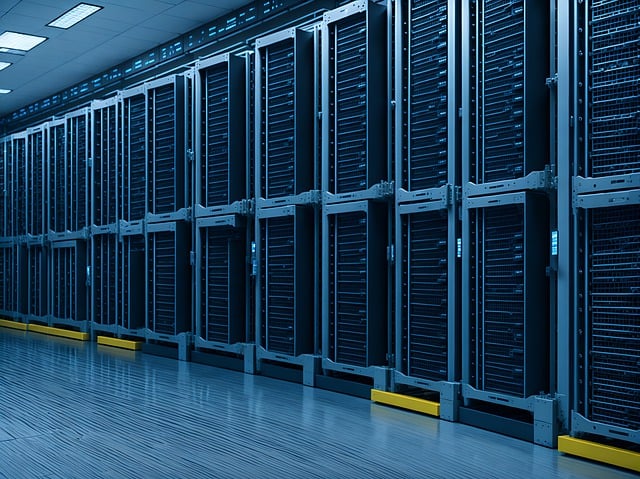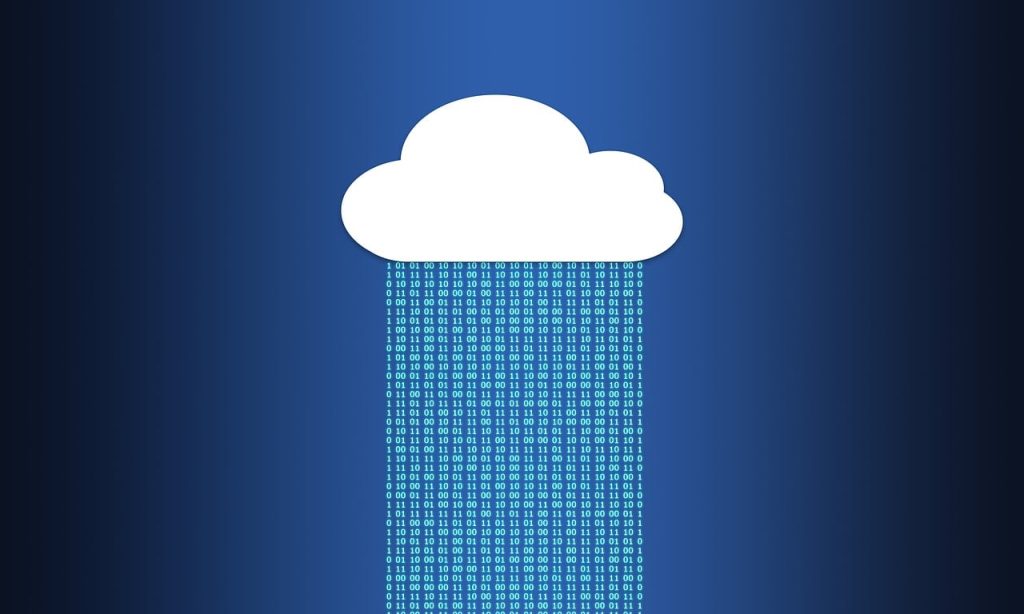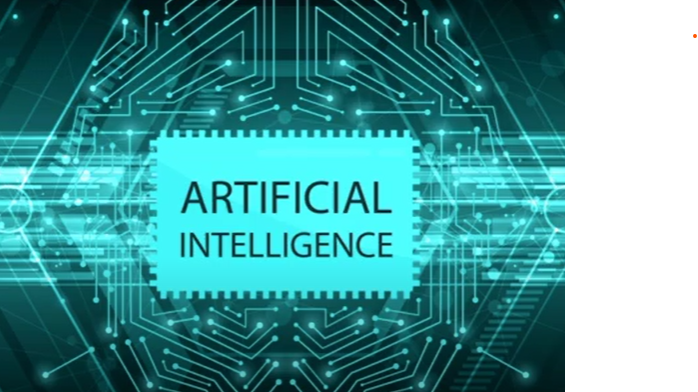Are you curious about the inner workings of the technological marvel known as cloud computing? If so, brace yourself as we unveil the secrets behind the question on everyone’s mind: How Does Cloud Computing Work?
In this article, we’ll explore its impact on data storage and processing. Unveil the core components: IaaS, PaaS, and SaaS. Unravel virtualization, data centers, and network infrastructure.
And we’ll address security, privacy, and future trends. So you can gain insights into the inner workings of cloud computing’s significance in technology.
What is Cloud Computing?
Definition of Cloud Computing
Cloud computing is the delivery of on-demand computing resources, including storage, servers, and software, over the Internet. It offers scalability, flexibility, and cost-efficiency, revolutionizing the way businesses access, manage, and utilize technology.
The Core Components of Cloud Computing
There are some core components that operate cloud computing smoothly. Let’s see some of them:
- IaaS (Infrastructure as a Service)
- PaaS (Platform as a Service)
- SaaS (Software as a Service)
- Storage and Data Management
- Networking and Connectivity
- Virtualization
- Security and Compliance
- Automation and Orchestration
- Hybrid Cloud Solutions
- Monitoring and Management
These components are fundamental to cloud computing. These provide infrastructure, platforms, software, and essential functionalities that enable businesses to harness the benefits of the cloud
1. IaaS (Infrastructure as a Service):
IaaS is like borrowing virtual computers, storage, and the internet from the Internet.
It helps businesses to have what they need without buying physical things.
They can use more or less resources as they need.
2. PaaS (Platform as a Service):
PaaS (Platform as a Service) is a special place in the computer cloud where developers can create their own apps. It has all the tools they need, like an operating system, a database, and programming languages. With PaaS, developers can focus on making their apps without worrying about the technical stuff. It helps them make apps faster and easier.
3. SaaS (Software as a Service):
SaaS (Software as a Service) delivers software applications over the Internet, eliminating the need for local installations. Users access and use the software through a web browser, enjoying convenience, scalability, and cost savings. The service provider handles the updates and maintenance. SaaS offers flexible and accessible software usage from anywhere with an internet connection.
4. Storage and Data Management:
Storage and Data Management in cloud computing involves storing, organizing, and securing data in the cloud. It provides scalable storage solutions and helps businesses access and analyze their data effectively for decision-making.
5. Networking and Connectivity:
Networking and connectivity in cloud computing help people safely access cloud resources. It includes things like virtual networks, VPN, load balancing, CDNs, and network security. These technologies make sure the communication in the cloud is reliable, fast, and secure.
6. Virtualization:
Virtualization is a technology that creates virtual instances of physical resources like servers, storage, and networks. It allows for resource consolidation, isolation, scalability, and flexibility in cloud computing.
7. Security and Compliance:
Cloud computing keeps data and computers safe. We follow rules and use security measures to protect everything. We control who can see the data and make sure everything works well. The people who run the cloud are always making it safer and keeping data protected.
8. Automation and Orchestration:
Automation and orchestration in cloud computing make things easier and faster. They help with tasks that need to be done again and again.
They also help manage computers and storage so they can be used well. This saves time and money, makes things work better, and lets us do more things quickly.
9. Hybrid Cloud Solutions:
A hybrid cloud combines public and private clouds to give us lots of benefits like flexibility, safety, saving money, and making sure our data is always available. It’s great for combining different types of cloud and keeping our important information safe and working well.
10. Monitoring and Management:
Monitoring and management in cloud computing help make things run smoothly. They make sure everything is working well, help save money, and keep things safe. It helps organizations fix problems quickly and makes sure everything runs efficiently.
The Working Mechanism of Cloud Computing
Cloud computing allows users to access resources and services over the internet without local infrastructure, thanks to virtualization and centralized management.
Virtualization
Virtualization is like magic for computers. It helps cloud computing work smoothly by making virtual copies of real things, like servers and storage.
This helps make sure everything runs efficiently and can change size easily. It’s an important part of how cloud services work!
Data Centers
Data centers are special places where all the important stuff for cloud computing is kept. They are like big buildings that have everything the cloud needs to work well. 
They make sure everything runs smoothly, keep information safe, and make it easy to use cloud services.
Network Infrastructure
Network infrastructure in cloud computing is like a big web that connects all the computers and devices together. It helps them communicate and share information.
It includes things like internet connections, special buildings called data centers, and different tools to keep everything secure and working smoothly. It also helps connect the cloud to other networks outside of it.
Cloud Service Models
Public Cloud
The public cloud is like a big computer that lots of people can use. It’s run by companies like AWS, Azure, GCP, and IBM Cloud.
It helps people and businesses by offering them services and things they need, like storage and software. It’s easy to use and you only pay for what you use.
Private Cloud
Private cloud-on-cloud service models let businesses use cloud services on their dedicated infrastructure. They can choose from different types of cloud services like IaaS, PaaS, or SaaS.
This gives them control, customization, scalability, and extra security in their private cloud environment.
Hybrid Cloud
A hybrid cloud is when you use different types of cloud services together, like SaaS, PaaS, and IaaS. It gives you flexibility, saves money, lets you control your data, and helps your business grow. You can use both private and public clouds depending on what you need.
Security and Privacy in Cloud Computing
Common security concerns in cloud computing
Cloud computing has security concerns like data breaches and loss, but using strong security measures, encryption, and access controls can help keep it safe.
Here are some security concerns:
- Data breaches
- Data loss
- Compliance and regulatory issues
- Malware and ransomware attacks
- Account hijacking
Measures and best practices for data security
Following these steps makes data more secure. It’ll keep important information safe and reduces possible problems.
- Encryption
- Access Control
- Regular Security Updates
- Data Backup and Recovery
- Employee Training
Privacy Considerations and compliance regulations
By following these rules, companies can keep people’s information safe. And they can make people trust them more, and avoid problems with the law and their reputation.
- Privacy by Design
- Data Minimization
- Consent and Transparency
- Data Security
- Compliance with Regulations
Future Trends in Cloud Computing
Emerging technologies shaping the Future of cloud computing
These new technologies make cloud computing better and help businesses do more things. They make it faster, can handle more work, keep things safe, and let businesses change and grow easily. This helps businesses find new ways to do things and come up with new ideas.
Let’s see some technologies for cloud computing:
- Edge Computing: Making computers and storage closer to where the data is, so it can be processed faster and without any delays.
- AI and ML: Using smart computer programs to help the cloud do more things by itself and understand and analyze data better.
- Serverless Computing: Making it easier for developers to write code without worrying about managing servers or setting them up.
- Containers and Container Orchestration: Using small containers and special tools to make sure applications work well and can change size easily.
- Quantum Computing: Leveraging quantum mechanics principles for faster and more powerful computations, with potential applications in cryptography and optimization.
- Blockchain Technology: Enhancing security, transparency, and trust in cloud-based applications through decentralized and immutable blockchain networks. Cryptocurrency also operates by using this technology.
- 5G Connectivity: Making cloud-based services faster, more reliable, and connected with less delay. It helps with things like IoT and joining with other devices smoothly.
Predictions for the evolution of cloud computing
Cloud computing will continue to grow and improve, becoming faster, more powerful, and more secure. It will integrate with technologies like AI and edge computing, offering personalized services. The future of cloud computing is promising and really exciting.
Final Thoughts
Cloud computing has changed how we use technology. It gives us more resources and flexibility. In the future, it will be even faster, and safer, and work with new technologies. We can look forward to exciting new things as cloud computing keeps growing and changing how we do things.
FAQ
- What is cloud computing?
Delivery of computing services over the Internet.
- What benefits of cloud computing?
Scalability, cost-efficiency, flexibility, accessibility.
- Types of cloud services?
IaaS, PaaS, SaaS.
- Is cloud computing secure?
Yes, with proper security measures.
- How can cloud computing help businesses?
Cost savings, scalability, remote collaboration, rapid deployment.
- Risks of cloud computing?
Data breaches, data loss, service outages, compliance challenges.
- Can I migrate existing applications to the cloud?
Yes, with refactoring or migration tools.
- Public vs. private vs. hybrid clouds?
Public: shared, private: dedicated, hybrid: combination.
- Role of virtualization in cloud computing?
A: Efficient resource utilization and allocation.
- Ensuring data security in the cloud?
A: Encryption, access controls, backups, compliance.


